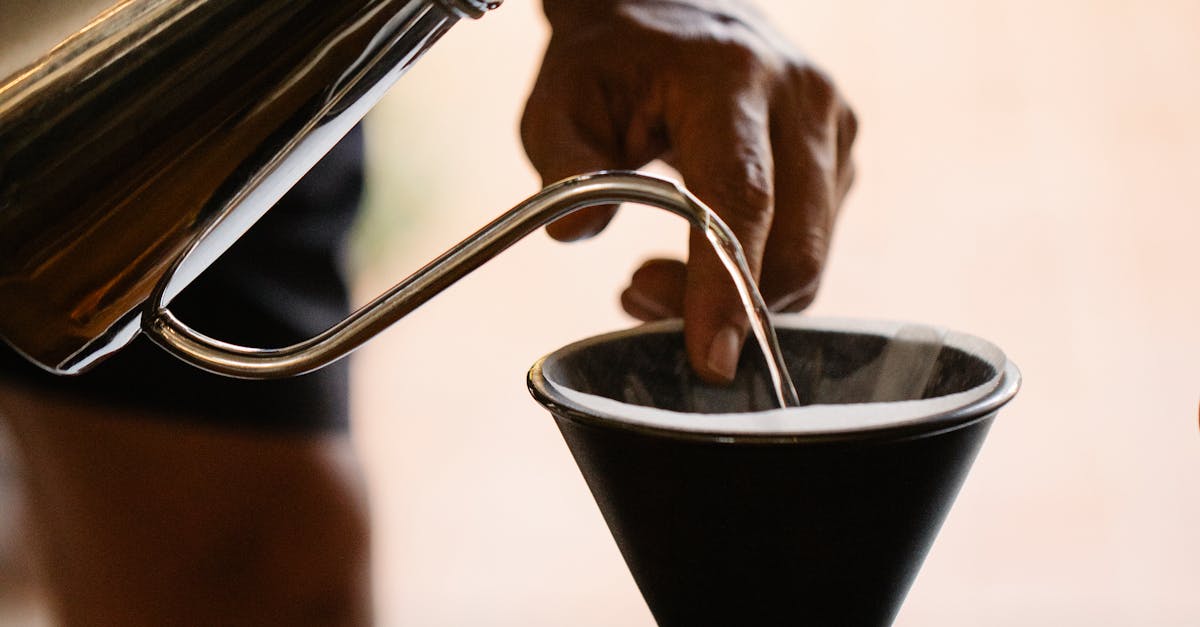
Table Of Contents
Changing the Temperature and Pressure Relief Valve
The temperature and pressure relief valve is a crucial component of any water heater. Its primary function is to release excess pressure that can build up within the tank, ensuring safety and preventing potential explosions. When this valve fails, it may leak or, worse, become completely inoperable. Regular inspection and timely replacement of the valve can help avoid significant damage to the water heater and surrounding areas.
Finding replacement parts for a failing valve is straightforward since they are widely available in hardware stores or online retailers. Many options fall under the category of Hot Water System Parts and Accessories. It is essential to choose a replacement valve that matches both the specifications of your water heater and local building codes. Proper installation generally involves turning off the water supply and draining some of the tank before removing the old valve and securing the new one.
Ensuring Proper Functionality
To ensure the proper functionality of your water heater, it is essential to regularly check and maintain its components. This includes examining the temperature and pressure relief valve, which is crucial for safety. If this valve fails, it can lead to dangerous situations, including the risk of pressure buildup. Regular inspections allow homeowners to replace worn parts before they cause significant issues, ensuring safe operation of the heater.
In addition to the relief valve, other key components warrant attention. Investing in quality Hot Water System Parts and Accessories can prevent future problems and extend the longevity of the heater. Anode rods, for instance, play a vital role in corrosion prevention, and replacing them when necessary can help maintain the efficiency of the system. Without proper maintenance, minor issues can escalate, often leading to costly repairs or replacements.
Replacing the Anode Rod
The anode rod plays a crucial role in protecting the water heater from corrosion. This component is typically made of magnesium, aluminum, or zinc and is designed to corrode over time, which helps safeguard the tank itself. Regularly inspecting and replacing the anode rod can significantly extend the lifespan of your water heater. Many homeowners overlook this maintenance task, but doing so can prevent costly repairs down the line.
When searching for replacements, be sure to choose a high-quality anode rod suitable for your specific system. You can find various options in the Hot Water System Parts and Accessories section at home improvement stores or online retailers. Understanding the importance of this small but vital part can help ensure efficient water heating and prolong the overall durability of the unit.
Importance of Maintenance
Regular maintenance of a water heater is essential to ensure its efficiency and longevity. Over time, components can wear out or malfunction, leading to reduced performance or even complete failure. Routine checks and timely replacements can mitigate these issues. Accessing quality Hot Water System Parts and Accessories allows homeowners to perform upkeep and repairs effectively, ensuring their systems run smoothly.
Ignoring maintenance can result in various problems, including leaks and diminished heating capabilities. By investing time in routine inspections and understanding the importance of each part, homeowners can prevent costly repairs. Being proactive with components such as the temperature and pressure relief valve and the anode rod makes a significant difference in the overall reliability of the water heater. With the right Hot Water System Parts and Accessories, maintaining a safe and efficient system becomes more manageable.
Dealing with Leaks in Your Water Heater
Leaks in a water heater can be both frustrating and damaging if not addressed promptly. Identifying the source of the leak is essential to determining the appropriate action. Common areas where leaks may occur include the drain valve, temperature and pressure relief valve, and around the inlet or outlet connections. Each of these components plays a critical role in the overall operation of the water heater, making it crucial to inspect them regularly for any signs of wear or damage.
Once the source is identified, the next step is to decide whether a simple tightening of fittings can resolve the issue or if replacement parts are necessary. For those who need to replace components, Hot Water System Parts and Accessories are readily available to make the task more manageable. Having access to quality replacement parts ensures that your water heater functions effectively and minimizes the risk of further leaks or damage.
Identifying the Source of the Leak
Identifying the source of a leak in your water heater is crucial for ensuring its proper function. Common areas to inspect include the tank itself, connections, and the temperature and pressure relief valve. If water is pooling around the base, there may be an issue with the tank or connections. While monitoring these areas, it’s equally important to check nearby plumbing fixtures for signs of dampness, which could indicate a hidden leak.
Utilizing Hot Water System Parts and Accessories can aid in diagnosing and repairing leaks. Inspecting fittings and pipe joints can reveal loose connections that might require tightening or replacement. When dealing with leaks, never disregard the importance of safety. Ensure the water heater is turned off and cooled down before conducting any inspections to prevent injury or further damage.
FAQS
Can I replace parts on my water heater myself?
Yes, you can replace parts on your water heater yourself if you have the necessary skills and tools. However, it’s important to follow safety guidelines and manufacturer instructions to avoid injury or damage.
What parts of a water heater can be replaced?
Commonly replaceable parts include the temperature and pressure relief valve, anode rod, heating elements, and the thermostat.
How often should I replace the anode rod in my water heater?
It is generally recommended to replace the anode rod every 3 to 5 years, depending on water quality and usage. Regular maintenance can help prolong the life of your water heater.
What should I do if I notice a leak in my water heater?
First, turn off the power and water supply to the heater. Then, identify the source of the leak by checking connections and fittings. Depending on the severity, you may need to replace parts or consult a professional.
Can a faulty temperature and pressure relief valve cause problems?
Yes, a faulty temperature and pressure relief valve can lead to dangerous pressure build-up in the water heater, which may result in leaks or even explosions. It’s crucial to ensure the valve is functioning properly.





























